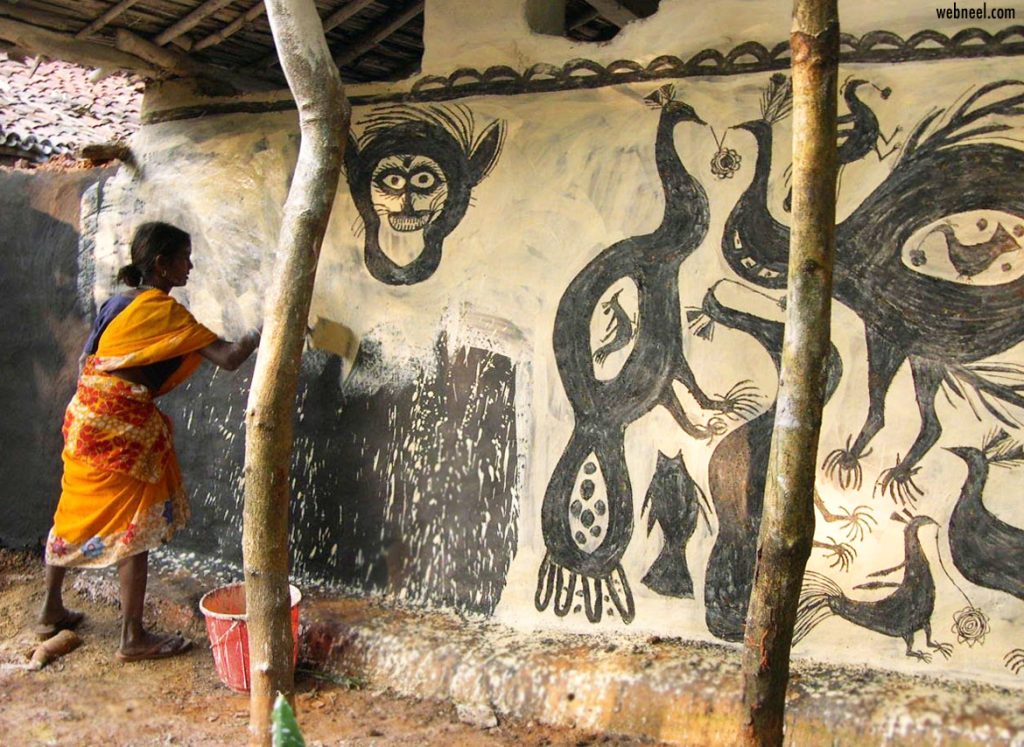India is a diverse country and a popular tourist destination. Whether it is a stroll at the Lodhi Art District or shopping at the handicraft hubs, the beauty of and within India cannot be put into words. One of the arts which is extremely gorgeous yet often overlooked is the folk art of Jharkhand – Sohrai paintings. Sohrai and Khovar paintings are indigenous wall and mural paintings. However, due to rising demands and their introduction into the mainstream, they are now reproduced on paper and clothes.
Jharkhand Sohrai Painting
Believe it or not, Jharkhand’s Sohrai paintings can be traced back to the cave paintings of the Paleolithic period (7000 – 4000 BC). The cave paintings around the regions showcased floral and animal motifs, which were believed to be made by the ancestors of the natives. You may find talented Sohrai artists throughout India’s eastern belt, but the Hazaribagh district of Jharkhand is often known as the mecca of Sohrai Khovar paintings. In 2020, the district was given a geographical indication tag. Sohrai is the modernised version of the Mundari word ‘Soroi’ translating to ‘to lash with a stick.’ The paintings are most commonly drawn during the Sohrai festival — a celebration of livestock and cattle.
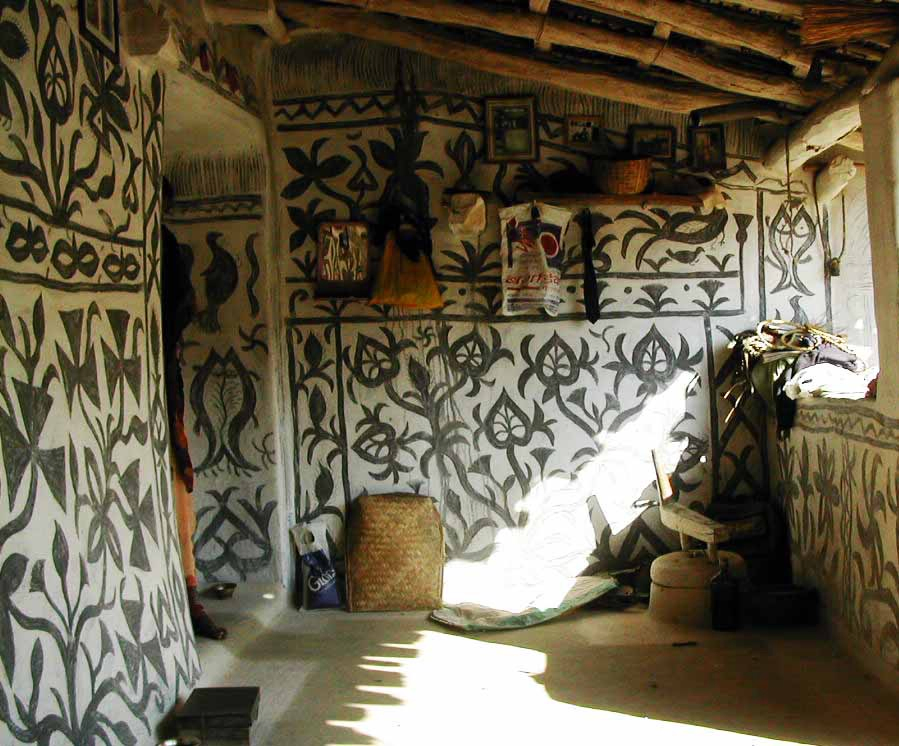
Features of Sohrai Painting Jharkhand
Sohrai paintings of Jharkhand are inherently matriarchal; not only in their depiction but also in tradition. The art form is still practised by the women 13 tribes of the district, including but not limited to Kurmi, Ganju, Oraon, Agaria, Prajapati, Munda, Santal, and Ghatwal tribes. The skill of Sohrai paintings is passed from mothers to daughters. If you have already googled ‘Sohrai Painting images’, you must know that the recurring motifs in Sohrai paintings depict pregnant subjects, mother-child bond, and animals often accompanied by their offsprings such as hens, Indian buffalo, Nilgai, Indian rhinoceros, tigers, and wild pigs. The motif celebrates Lord Shiva in his ‘Pashupati’ incarnation.
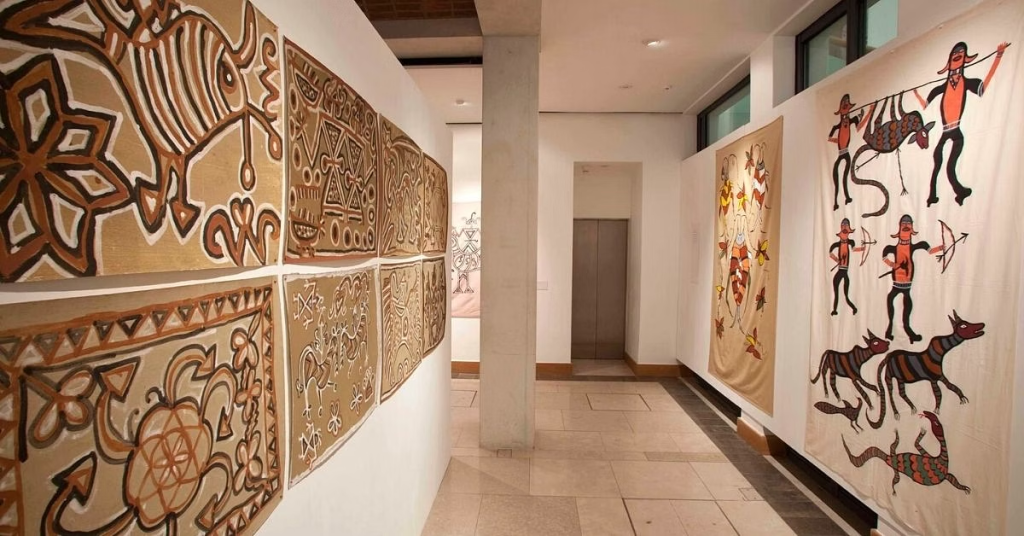
The paintings are often only made using red, white, and black lines. The red represents the blood of their ancestors, which kept the tradition alive whereas the black represents death, an emblem of Lord Shiva. The white lines denote food or sustenance. Sohrai paintings are often made during the autumn season, right after the Hindu festival of Diwali. While Sohrai paintings are common in their techniques, the motifs differ from tribe to tribe.
Are Sohrai and Khovar paintings The Same?
Sohrai and Khovar paintings are almost the same in all aspects. Both of them use the same techniques and traditions. Despite numerous similarities, there exists a simple difference. The term ‘khovar’ breaks down to ‘kho’ and ‘var’ meaning room and groom respectively. As can be deduced, Khovar paintings signify the marriage rituals, which are almost exclusively conducted during the monsoon seasons at the start of the paddy harvest.
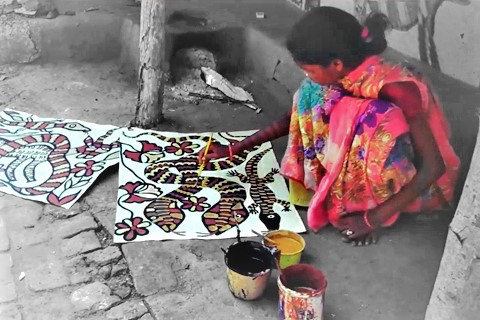
Unlike Sohrai paintings which use a combination of red and black, Khovar paintings use black and white to connote the womb and sperm. The recurring motifs in Khovar paintings are those associated with marital bliss and fertility such as peacocks, lizards, bamboo, elephants, lotuses, turtles, and other flowers.
The Making of Sohrai Paintings
To make a Sohrai painting canvas, the wall is covered with a black mixture of dung and soil using a cloth rag. Once dried, white clay is applied to it. The clay is manoeuvred using fingers or chewing sticks of the Sal tree, fashioned into a ‘datwan’ or ‘kuchi’. First, the red lines are drawn, followed by red, finishing with white lines. Every individual’s painting will differ based on the subject they have chosen and the region they belong to. In the plains, the use of domesticated animals is rampant. Wild animals usually adorn the tribes which reside in steep terrains.
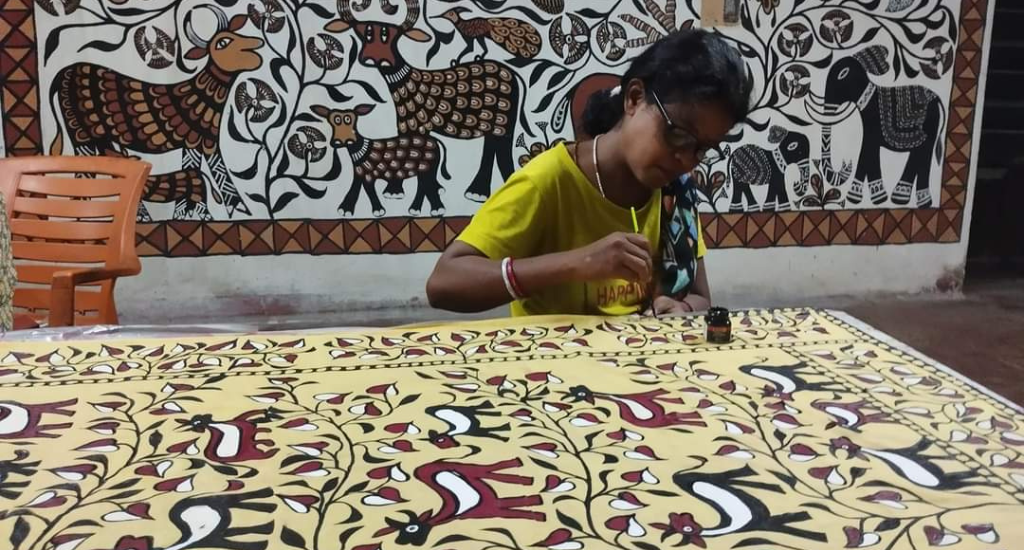
The colours are often foraged, although now they are sold by local merchants. Alternatively, they are made by mixing milk with the previous year’s harvest. The red colour comes from the hematite-rich red ochre (gerua mitti) taken from the river beds; the yellow is derived from yellow ochre (nagri/pila mitti) from the hills; the black colour is taken from manganese, powdered coal, or black ochre (kali mitti) found near coal mines. The white clay (dudhi/charak mitti) from limestone mines provides the white colour to the Sohrai Khovar paintings.
Proliferation of Sohrai Paintings in The Mainstream
Despite its rich and frankly unique historical origins, the Sohrai paintings of Jharkhand remained hidden from the mainstream. This was until Bulu Imam established the Sanskriti Museum & Art Gallery in 1992 displaying the marvels of Sohrai Khovar paintings. The formation of the Tribal Women Artists’ Cooperative (TWAC) helped further Imam’s vision and promote Sohrai paintings. The ‘Paint My City’ initiative by CRPF personnel, Munna Singh alerted the district governments who ensured that the styles covered the walls of the Hazaribagh district. Prime Minister Narendra Modi gave the art form yet another push when he was invited to inaugurate the district’s railway station.
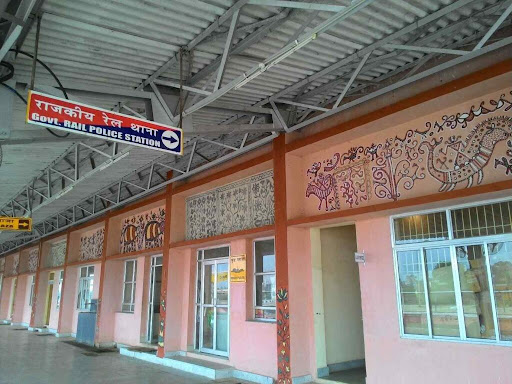
The art form was thrust into the limelight when he talked about the Sohrai paintings on his radio show ‘Mann Ki Baat.’ Through this mention, its notoriety spread through the city, so much that it lost its individuality. Non-traditional Sohrai artists morphed the art form to denote their expressions rather than nature or mother-child bonds. Most recently, the Sohrai paintings of Jharkhand gained international recognition when delegates gathered in Ranchi for the 2023 G20 conference on Materials for Sustainable Energy.
Image Courtesy – Webneel.com

Hi Ya’ll !!
I love writing about pop culture and all things queer.
Sub Editor at Abir Pothi

